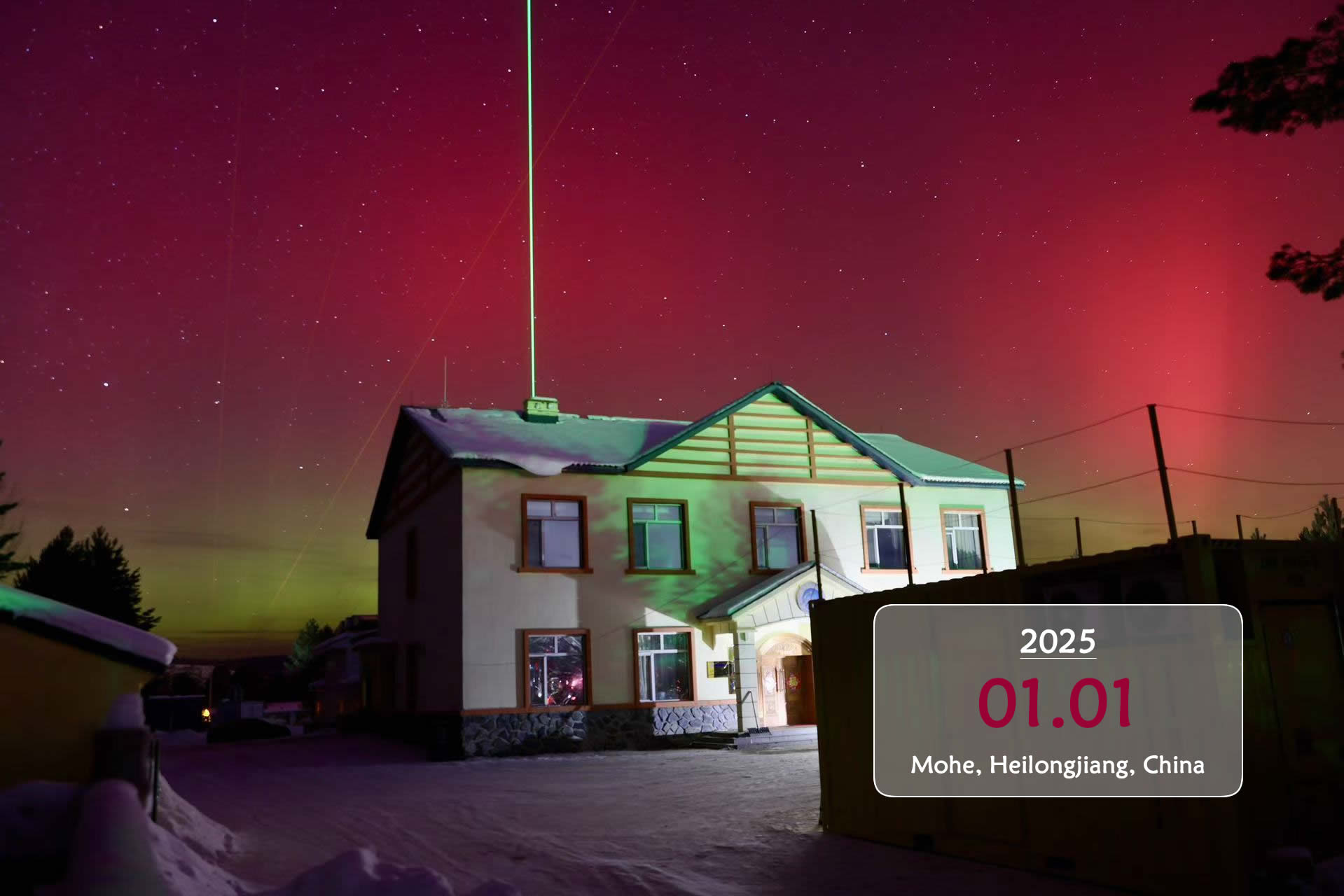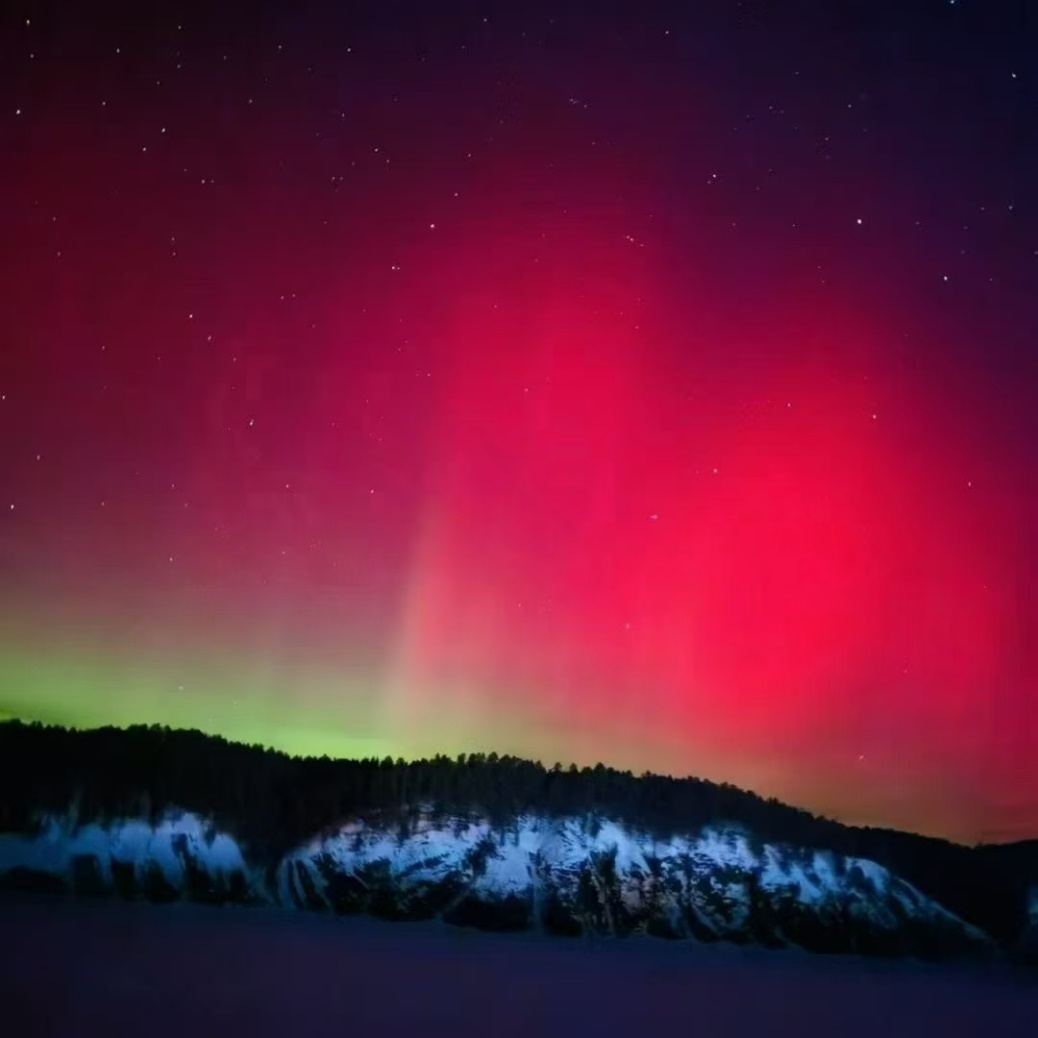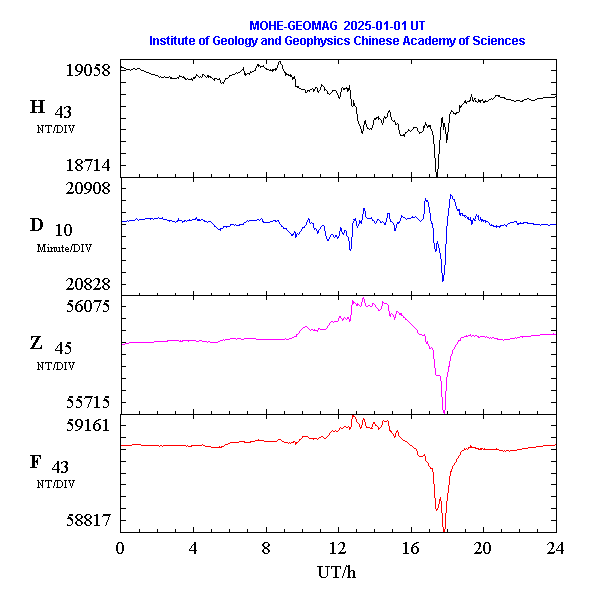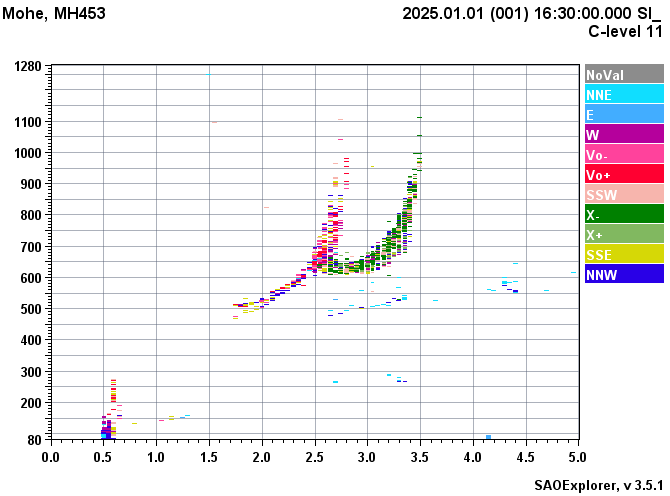On January 1, 2025, residents of Mohe, Heilongjiang Province, the northernmost city in China, observed a remarkable auroral display. The night sky over Arctic Town was illuminated by a vivid aurora featuring green, red, and purple hues. This rare event was recorded by the Heilongjiang Mohe National Observatory of Geophysics, IGGCAS, hereinafter referred to as the "Mohe National Observatory."

Aurora photographed inside Mohe National Observatory (Photo: Cheng Xuewu)

Aurora photographed outside Mohe National Observatory (Photo: Yue Yuangui)
The auroraobserved during this event resulted from solar eruptions originating in two active regions (AR3936 and AR2932). These eruptions caused significant disturbances to Earth's magnetic field, with the geomagnetic Kp index reaching a level of 8, indicative of a severe geomagnetic storm. High-energy particles from the Sun interacted with Earth's atmosphere, exciting atomic and molecular species and producing auroral emissions across a range of spectral lines, resulting in the observed multicolored display.
Geomagnetic storms are well-known consequences of solar eruption activity. During such events, coronal mass ejections release billions of tons of solar material at velocities ranging from hundreds to thousands of meters per second. When these energetic particles collide with Earth, they alter the direction and intensity of the Earth's magnetic field, inducing geomagnetic storms. During this storm, the Dst index reached -215 nT, reflecting its intensity.
Although geomagnetic storms are visually captivating, they can disrupt high-frequency communication systems and global positioning systems, particularly in high-latitude regions. Systems reliant on ionospheric stability, such as drones and automated agricultural machinery, may also experience operational challenges, including loss of accuracy and reliability.
Geomagnetic field observations at the Mohe National Observatory recorded significant geomagnetic disturbances, with a K-index of 7. Ionospheric observations confirmed the presence of ionospheric spread-F phenomena, further underscoring the storm's profound impact on the ionosphere. With the gradual migration of Earth’s magnetic pole, Mohe's magnetic latitude is increasing, enhancing the station’s strategic importance in monitoring energy transfer in high-latitude and polar regions.

Severe geomagnetic field disturbance observed at Mohe National Observatory.

Ionospheric spread-F phenomenon observed at Mohe National Observatory.
Located approximately 1 km north of Arctic Town in Mohe City (122.3°E, 53.5°N), the Mohe National Observatory is the northernmost geophysical observatory on the mainland of China. It is equipped for comprehensive monitoring of geomagnetism, seismology, the ionosphere, and the middle to upper atmosphere. The station has become increasingly vital for detecting and analyzing severe space weather phenomena. Its contributions provide critical scientific insights into geomagnetic field variations, their implications for the space environment, and strategies for mitigating the adverse effects of space weather on modern technological systems.

Photo of the Mohe National Observatory.
Read More:
Mohe National Observatory
WDC for Geophysics, Beijing